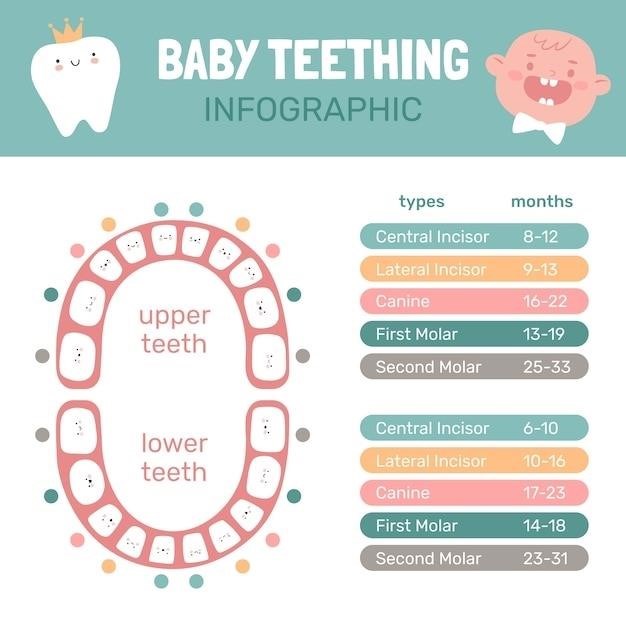The Art of Seduction⁚ A Comprehensive Guide
Robert Greene’s “The Art of Seduction” is a captivating exploration of the subtle and effective power of seduction, drawing inspiration from historical figures, literature, and psychology. This renowned guide delves into the art of persuasion and influence, offering a comprehensive analysis of the strategies and maneuvers employed by master seducers throughout history.

Introduction
In a world driven by power dynamics, seduction stands as a potent and often overlooked force. It’s not just about physical attraction; it’s a complex interplay of psychology, strategy, and manipulation, a dance of desires and vulnerabilities. Robert Greene’s “The Art of Seduction” invites readers to delve into this intriguing realm, uncovering the secrets behind the art of captivating and influencing others. This book transcends the realm of mere romantic conquest, exploring the broader implications of seduction as a tool for achieving personal and professional goals. From the ancient masters of seduction to modern-day examples, Greene dissects the strategies employed by those who have mastered the art of captivating others.
The “Art of Seduction” is more than just a guide to romantic encounters. It’s a comprehensive analysis of human behavior, unveiling the hidden motivations and desires that drive our actions. Greene delves into the psychological underpinnings of seduction, exploring the power of vulnerability, the allure of mystery, and the impact of creating an air of exclusivity. He reveals how these elements can be harnessed to create a powerful and irresistible aura.
This book is a journey into the world of seduction, offering insights that can be applied to various aspects of life. Whether you’re seeking to enhance your personal relationships, master your professional interactions, or simply gain a deeper understanding of human nature, “The Art of Seduction” provides a unique and insightful perspective.
Robert Greene’s Background and Expertise
Robert Greene is a renowned author and expert on human behavior, recognized for his insightful analysis of power dynamics and social manipulation. His works have garnered international acclaim, with titles like “The 48 Laws of Power” and “The 33 Strategies of War” becoming modern classics.
Greene’s fascination with the intricacies of human interaction stems from his background in classical literature. He holds a degree in classical literature and has meticulously studied the lives and works of historical figures who have mastered the art of persuasion and influence. This deep understanding of history and literature forms the foundation for his insightful observations on power dynamics and seduction.
Greene’s approach to seduction is rooted in a blend of historical analysis, psychological insights, and practical strategies. He draws upon the wisdom of ancient philosophers, military strategists, and master seducers to create a comprehensive framework for understanding and applying the principles of seduction.
His books are not merely theoretical treatises; they are practical guides designed to help readers navigate the complex world of human relationships. Greene’s expertise in understanding human motivation and behavior makes him a compelling and insightful guide in the realm of seduction. He demystifies the art of captivating others, offering practical strategies that can be applied to various aspects of life.
Key Concepts and Themes
Robert Greene’s “The Art of Seduction” is a profound exploration of power dynamics, delving into the subtle and effective ways in which seduction can be used to influence and control others. It’s a masterclass in understanding human psychology and exploiting vulnerabilities, presented through the lens of historical figures, literature, and psychological insights.
One of the central themes is the idea of “The Seducer” ─ a compelling figure who can manipulate, mislead, and give pleasure all at once. Greene categorizes seducers into various archetypes like the Siren, the Rake, the Cold Coquette, and the Charismatic, each with distinct tactics and motivations.
The book emphasizes the crucial role of “The Seductive Process” which involves a series of maneuvers and strategies to gain mastery over the target. These maneuvers include choosing the right victim, appearing desirable, confusing desire with reality, and ultimately, creating dependence and a sense of powerlessness in the target.
Greene also delves into the concept of “The Anti-Seducer” ─ those who are susceptible to seduction, often due to their insecurities and vulnerabilities. Understanding the pitfalls of the Anti-Seducer provides valuable insight into how to avoid falling prey to manipulative tactics.
The 24 Maneuvers and Strategies
The core of Greene’s “The Art of Seduction” lies in its detailed exploration of 24 distinct maneuvers and strategies, each designed to manipulate the target’s emotions and desires. These maneuvers offer a comprehensive guide to the seductive process, covering everything from the initial stages of attraction to the final stages of control.
Some of the key maneuvers include⁚
- Choosing the Right Victim⁚ Identifying individuals who are most susceptible to seduction based on their personality traits, vulnerabilities, and desires.
- Appear to Be an Object of Desire⁚ Creating an aura of mystery and intrigue, making oneself appear desirable and unattainable, thus sparking the target’s curiosity and desire.
- Confuse Desire and Reality⁚ Blurring the lines between fantasy and reality, creating an illusion of intimacy and connection that is ultimately based on manipulation.
- Create Dependence⁚ Gradually making the target reliant on the seducer’s attention, approval, and validation, thus creating a sense of power imbalance.
- Use the Power of the Moment⁚ Capitalizing on opportune moments of vulnerability and heightened emotion to increase the target’s susceptibility to seduction.
These maneuvers are presented in a systematic and strategic manner, allowing readers to understand the psychology behind each tactic and how to apply them effectively.
The Seducer’s Toolbox
Beyond the 24 maneuvers, Greene equips readers with a “Seducer’s Toolbox,” a collection of practical tools and techniques for executing the art of seduction. These tools are designed to enhance the effectiveness of the maneuvers and create a more compelling and persuasive seduction.
Here are some of the key elements of the Seducer’s Toolbox⁚
- The Art of Conversation⁚ Mastering the art of engaging conversation, using wit, charm, and strategic questioning to captivate and intrigue the target.
- Non-Verbal Communication⁚ Understanding the subtle cues and gestures that convey attraction, confidence, and power, creating a powerful non-verbal presence.
- Creating Illusions⁚ Manipulating perceptions and creating a sense of mystery and allure through carefully crafted presentations of oneself and the situation.
- Playing the Role⁚ Assuming personas that evoke specific emotions and responses in the target, enhancing the seducer’s influence and creating a sense of intrigue.
- The Power of Timing⁚ Understanding the importance of timing and creating strategic pauses, silences, and moments of anticipation to build tension and increase the target’s desire.
The Seducer’s Toolbox provides readers with a practical framework for implementing the maneuvers and strategies outlined in the book, offering a step-by-step guide to achieving the desired outcome in the art of seduction.
The Art of Seduction⁚ A Timeless Guide
One of the most compelling aspects of “The Art of Seduction” is its timeless quality. Greene draws from a vast array of historical figures and literary works, spanning centuries and cultures, to demonstrate that the principles of seduction have remained remarkably consistent over time.
From Cleopatra’s strategic use of her charm and mystique to Casanova’s mastery of flirtation and intrigue, Greene reveals how the art of seduction has been employed by individuals across history to achieve their goals.
The book delves into the works of classic authors like Ovid, Kierkegaard, and Freud, highlighting how these writers explored the complexities of desire and manipulation. By examining these timeless perspectives, Greene emphasizes the enduring nature of the psychological dynamics at play in seduction.
The timeless insights presented in “The Art of Seduction” make it a relevant and valuable guide for anyone seeking to understand the nuances of human interaction and the power of persuasion. The book serves as a timeless reminder that the art of seduction is not simply about fleeting attraction but a complex interplay of psychology, strategy, and manipulation.
Applying the Principles in Modern Relationships
While “The Art of Seduction” draws heavily on historical examples, its principles remain remarkably relevant to modern relationships. Greene’s insights into human psychology, power dynamics, and the subtle art of manipulation provide a framework for navigating the complexities of contemporary dating and romantic connections.
However, it’s crucial to approach these principles with a modern lens. The book’s emphasis on power and control can be interpreted as manipulative or even unethical in the context of healthy, consensual relationships.
Rather than viewing the book as a manipulative playbook, modern readers can benefit from its insights into understanding the nuances of attraction, communication, and building emotional connection. Greene’s analysis of how individuals present themselves, create intrigue, and exploit vulnerabilities can be applied to fostering genuine connections and building trust.
Ultimately, the key is to apply these principles ethically and responsibly, focusing on building genuine relationships based on respect, honesty, and mutual understanding. By adapting Greene’s insights to a modern context, readers can gain a deeper understanding of human interaction and navigate the complexities of contemporary relationships with greater awareness and self-awareness.
The Ethics of Seduction
The Art of Seduction, despite its intriguing exploration of the psychology and strategies involved in seduction, raises significant ethical concerns. Greene’s focus on manipulation, power dynamics, and exploiting vulnerabilities can be interpreted as promoting unethical behavior, particularly in the context of romantic relationships.
The book’s emphasis on gaining control over another person, often through deception or manipulation, clashes with modern values of consent, respect, and genuine connection. Greene’s techniques, such as creating a sense of scarcity, playing on insecurities, or using mixed signals, can be viewed as manipulative and potentially harmful to the individual being seduced.
While the book offers valuable insights into human psychology and social dynamics, it’s essential to recognize that seduction, when employed unethically, can be a form of exploitation.
A responsible approach to the principles outlined in “The Art of Seduction” involves recognizing the potential for harm and prioritizing ethical conduct. Seduction should be viewed as a process of mutual attraction and respect, rather than a manipulative game of power.
Robert Greene’s “The Art of Seduction” is a thought-provoking and controversial exploration of the psychology and strategies behind seduction. It delves into the intricacies of human behavior, offering a fascinating glimpse into the power dynamics that shape our relationships.
While the book’s insights into the art of persuasion and influence are undeniable, it’s crucial to approach its teachings with caution; The ethical implications of using manipulation and exploiting vulnerabilities to achieve personal gain are significant and warrant careful consideration.
Ultimately, “The Art of Seduction” serves as a reminder that seduction, when practiced responsibly, can be a powerful tool for building meaningful connections. However, it’s vital to prioritize ethical conduct, mutual respect, and genuine connection over manipulative tactics and power plays.
Where to Find The Art of Seduction PDF
Finding a free PDF copy of “The Art of Seduction” can be tricky, as the book is copyrighted and protected by intellectual property laws. However, several online resources offer access to the book in various formats. Websites like Z-Library provide a vast collection of ebooks, including “The Art of Seduction,” often for free, although their legality and ethical considerations are debatable.
Additionally, online booksellers and platforms like Amazon and Google Books offer both physical and digital copies of the book, allowing you to purchase it legally and support the author’s work. However, remember that downloading pirated copies of copyrighted materials is illegal and unethical, and it’s always best to support authors by acquiring books through legitimate channels.
Further Reading and Resources
Beyond Robert Greene’s “The Art of Seduction,” a wealth of resources exists to delve deeper into the complexities of seduction, persuasion, and social dynamics. Exploring works by renowned authors like Niccolò Machiavelli, whose “The Prince” offers insights into power and manipulation, or Dale Carnegie’s “How to Win Friends and Influence People,” which focuses on building relationships and influencing others, can provide valuable perspectives.
Additionally, numerous academic journals and articles explore the psychology of seduction, social psychology, and interpersonal relationships, offering scientific insights into human behavior and attraction. Exploring these resources can enrich your understanding of the art of seduction and its underlying principles, allowing you to navigate social interactions with greater awareness and finesse.

















